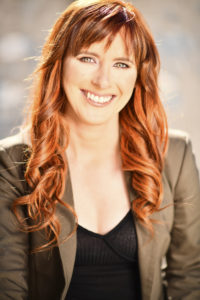Firearms History Consulting

I have spent the last fifteen years immersed in the study of firearms history, technology, and culture. I earned both bachelor’s and master’s degrees in American History from the University of Delaware, during which I studied firearms history and culture and instructed undergraduate students about military weaponry throughout history. Much of my work since then focuses heavily on material culture surrounding the macro-history of firearms and how their developments have affected industry, culture, and society for centuries. I have been fortunate to work in some of the largest collections in the United States, beginning my career as a researcher and fellow in the Smithsonian Institution’s National Firearms Collection housed in the National Museum of American History.
Additionally, I spent a decade working with and running the only accredited firearms museum in the United States, the CFM, a part of the Buffalo Bill Center of the West, which receives approximately 200,000 visitors annually. Of the 200,000 people, it is estimated, based on initial survey data for the renovation, that only 50% of those people admit to having a background or specified interest in firearms. During my tenure, I also served as Project Director of the museum’s full-scale multimillion-dollar renovation. With the aid of my team, I was responsible for all facets of the renovation including but not limited to concept, content, fundraising, and collections management. Final content for the museum was reviewed internally and by an external panel of experts, including academic historians, museum professionals, teachers, public educators, gun collectors, and people unfamiliar with firearms, as well as people with a range of different political views on guns. The resulting museum, which reopened July 2019, provides a more interpretive space to facilitate productive dialogue on firearms and their roles in history. Throughout this museum, terminology and definitions play a significant role in educating both visitors not familiar with firearms and those who consider themselves aficionados. Because roughly half of the museum’s audience is not familiar with firearms, we dedicated an entire gallery at the front of the museum to understanding the basics of firearms past and present, their features, ammunition, and safety. Since its opening, the museum has received favorable reviews from the Wall Street Journal and National Public Radio for its accessibility to diverse audiences and thoughtful handling of what can be a sensitive topic. It has also been praised for its efforts to educate on and impact firearms safety
During my time at the CFM and through my consulting business, I have become nationally known and sought after to provide a material culture perspective on firearms history that is often lacking in much of modern, academic, and legislative discussions on firearms. I guide museums as well other non- and for-profit organizations and government entities on the interpretation and understanding of that history. I have served as an expert witness on product liability, trade dress, criminal, and civil cases relating to firearms and ammunition. In May 2021, I testified in front of the Senate Judiciary Subcommittee on the Constitution’s Hearing regarding “Ghost Guns. Because I have worked in several national collections that have upwards of 10,000 firearms each – collections that range from the earliest through most recent technology – I have developed a broad understanding of how firearms have evolved. Additionally, I have had the rare opportunity to work with, see, study and handle many of the firearms referenced in this declaration.
In addition to my historical scholarship, I also have played a role in public education around firearms. I have been responsible for the education of tens of thousands of students from elementary through college levels, teaching not only firearms safety and basics, but the historical and technical evolution of the firearm. In 2017, I developed the first full-scale symposium in the United States dedicated to the study of firearms as material culture, which reoccurs annually. These symposia were organized to bring together firearms scholars from around the world to discuss their collections but also to create metrics to analyze the quality of scholarship that already has been done in the field. The study of firearms is a complicated one, especially since much of the information about the objects themselves have traditionally been conducted by well-known firearms researchers and collectors. However, not all those people fall under traditional definitions of academic scholarship. On the other side, because of limitations in the study of firearms, academic research often has flaws in terms of a general understanding of the firearms themselves. We have worked to lessen that gap to create more balanced scholarship. To continue that mission, I sit on the Editorial Board for the recently revived, peer-reviewed arms journal, Armax, and I recently co-founded the University of Wyoming College of Law’s Firearms Research Center in 2022. Despite its location in the College of Law, this new center intends to encourage research of all types related to arms and ammunition.
Currently as a museum consultant, I am in the process of building several museums with heavy emphasis on firearms collections. I also conduct workshops on firearms, survey collections, and curate exhibitions at institutions such as the Houston Museum of Natural Science, CM Russell Museum & Complex, and the Mob Museum. I have served as a scholar and a panelist for the National Park Service and the Organization of American Historians on a forthcoming Coltsville National Historic Site. I am also an expert witness, freelance writer, guest lecturer, on-camera firearms historian, and television producer.
Contact
If you would like to hire Ashley, please contact her at [email protected]